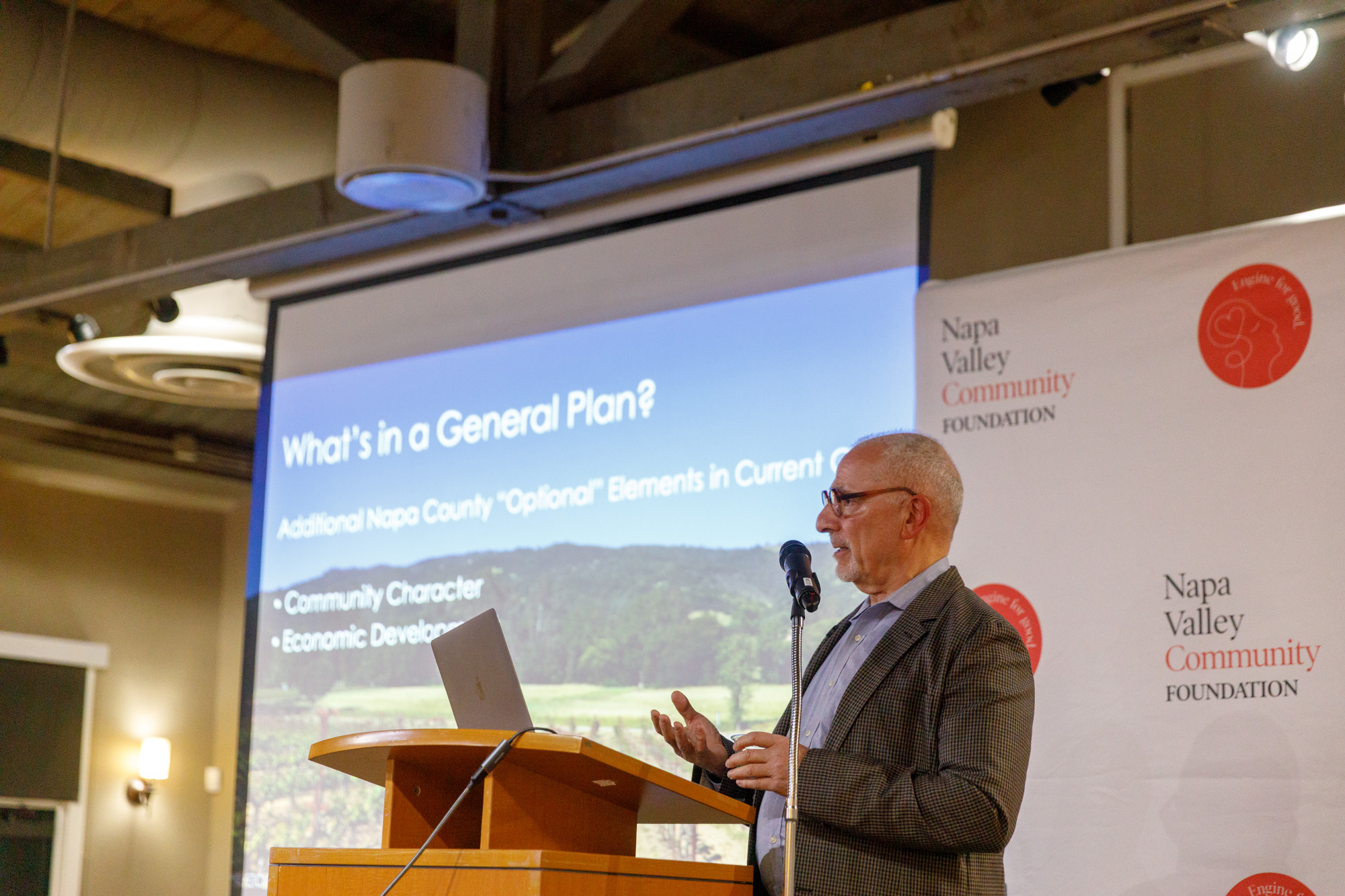How will Napa County grow and evolve over the next decade? That was the central question at our recent Town Hall Event, where urban planning expert John Rahaim shared insights on the challenges and requirements of updating our General Plan.
Our CEO Terence Mulligan opened the event by reinforcing our mission to address the most pressing challenges facing our local community. He highlighted the Foundation’s long-standing commitment to Napa County, including:
- Over $100 million in grants and scholarships distributed over the past 30 years
- Plans to double our financial commitment for immigrant legal services
- A new safety net fund to strengthen local nonprofits serving our Valley
These efforts reflect our dedication to building a stronger, more resilient Napa County—especially as we navigate critical issues like housing, environmental sustainability, and disaster preparedness.
Key Insights from Urban Planning Expert John Rahaim
Our speaker, John Rahaim, who has extensive experience in urban planning and design, explained the state’s requirements for a general plan, which includes nine mandatory elements such as housing, safety, and circulation.
John, former planning director for the City and County of San Francisco (2008 to 2020), provided an in-depth look at the General Planning process in California. He explained that every county’s General Plan must include nine key elements—such as housing, safety, and circulation—but noted that state requirements are making these plans more detailed than ever before.
“On the one hand, when you think about it, if you keep it high level, it won’t take as long, and you’ll get more community consensus, but it might be so high level that it’s meaningless. And that’s the tension.”
This is especially true of the housing and safety elements, which are required by law to be more specific. John explained that:
- Housing elements not only outline long-term growth strategies but must also identify specific locations for new housing and align with the state’s allocation for each county.
- Safety elements are evolving in response to wildfires, flooding, and other natural disasters, with the state now providing more detailed guidelines for how counties should develop their safety plans.
Community Engagement: The Key to Balancing Economic Growth and Preservation
John emphasized the importance of community engagement and public participation in the planning process, suggesting techniques such as scenario planning to help the community envision different future outcomes. Audience members raised questions about balancing state housing requirements with local agricultural preservation goals, as well as ways to minimize the impact of politics on the planning process. John acknowledged the difficulty of this balance and suggested that building strong community consensus could help.
How You Can Get Involved: Baseline Data Report Update
AS Napa County begins the General Plan Update, the first step is revising our Baseline Data Report (BDR). First developed in 2005, the BDR is a scientific assessment of the county’s environmental, economic and social baseline conditions and regulatory framework, which will inform the General Plan Update. The County has provided a fact sheet on the BRD Update and how residents can participate.
Event Recording & Resources
The event video is available here. Due to a technical issue, the livestream was briefly interrupted, but it resumes midway through John’s presentation. You can also access John’s slides here.
We hope this event provided valuable insights into the General Planning process and Napa County’s path forward. We are committed to continuing this conversation in the year ahead—stay tuned for more opportunities to engage.






















